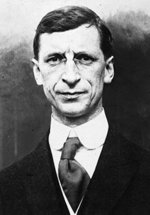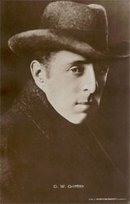Anglo-Irish Treaty
|
|
Anglo-Irish_Treaty_signatures.gif
| Contents |
Content of the Treaty
Among its main clauses were that:
- British forces would withdraw from most of Ireland.
- Ireland was to become a self-governing Dominion of the British Empire, likeCanada, Newfoundland, Australia, New Zealand and The Union of South Africa.
- As with the other dominions, the formal head of state of the Irish Free State / Saorstát Éireann would be the British sovereign, who would be represented by a Governor General (See Representative of the Crown.
- Members of the new Free State's parliament would be required to take an Oath of Allegiance to the Free State. A secondary part of the Oath was to be of fidelity to "King George V, his heirs and successors" as part of the Treaty settlement.
- Northern Ireland (which had been created earlier by the Government of Ireland Act) was to have the option of withdrawing from the Irish Free State within one month of the Treaty coming into effect.
- If Northern Ireland chose to withdraw, a Boundary Commission would be constituted to draw the boundary between the Irish Free State and Northern Ireland.
- Britain, for its own security, would continue to control a limited number of ports, known as the Treaty Ports, for the Royal Navy.
- The Irish Free State would assume responsibility for its part of the Imperial debt.
- The Treaty would have superior status in Irish law: in the event of a conflict between it and the new 1922 Constitution of the Irish Free State, it would take precedence.
Anglo-Irish_Treaty_Griffith_annotated2.gif
Negotiators of the Treaty
The negotiators included
- David Lloyd George, MP
 (British Prime Minister)
(British Prime Minister)
- Lord Birkenhead

- Winston Churchill

- Austen Chamberlain

- Sir Gordon Hewart

- Arthur Griffith
 (Chairman of the Irish delegation)
(Chairman of the Irish delegation)
- Michael Collins, TD
 (Irish Republic's Minister for Finance and head of the Irish Republican Brotherhood.
(Irish Republic's Minister for Finance and head of the Irish Republican Brotherhood.
- Robert Barton

- E.J. Duggan

- Charles Gavan Duffy

(Robert Erskine Childers, the author of the Riddle of the Sands and former Clerk of the British House of Commons served as one of the secretaries of the Irish delegation).
Detail and background
The contents of the Treaty divided the Irish Republic's leadership, with the President of the Republic, Eamon de Valera, leading the anti-Treaty minority. The main dispute was centred on the Dominion status (as represented by the Oath of Allegiance and Fidelity) rather than be an independent Republic. Partition, though certainly a factor, was not the most important; both sides believed that the Boundary Commission would transfer many large nationalist areas to the Free State, reducing Northern Ireland's size so as to make it too small to be a viable political entity, leading to "inevitable" Irish unity. (In fact, the commission made no changes, despite the wishes of hundreds of thousands who found themselves still under British jurisdiction.)The Second Dáil formally ratified the Treaty in December 1921. (The House of Commons of Southern Ireland, which was made up largely of the same membership as the Dáil, but which was in British constitutional theory the parliament legally empowered to ratify the Treaty, did so in January 1922.) De Valera resigned as President and was replaced by Arthur Griffith. Michael Collins formed a Provisional Government of Ireland theoretically answerable to the House of Commons of Southern Ireland, as the Treaty laid down. In December 1922 a new Irish constitution was enacted by the Third Dáil, sitting as a Constituent Assembly.
David_Lloyd_George.jpg
Prime Minister and head of the British delegation
Opponents of the Treaty, primarily Eamon de Valera, mounted a military campaign of opposition which produced the Irish Civil War (1922–23). In 1922 its two main Irish signatories, President Griffith and Michael Collins, both died. Griffith died partially from exhaustion; Collins, at the signing of the Treaty, had said that in signing it, he may have signed his "actual death warrant", and he was correct: he was assassinated by anti-Treaty republicans in Béal na mBláth in August 1922, barely a week after Griffith's death. Both men were replaced in their posts by William T. Cosgrave.
The Treaty's provisions relating to the monarch, governor-general and the treaty's own superiority in law were all deleted from the Constitution of the Irish Free State in 1932, following enactment of the Statute of Westminster by the British Parliament. The Statute provided that all dominions extant or newly created thereafter were fully independent of U.K. and, thus, not subject to any acts of the British Parliament. (The sole exception to this was Canada, at her own request, who remained nominally subject to the British Parliament until 1982, because the federal and provincial governments could not agree on an amending formula for the Canadian Constitution.) Thus,the Government of the Irish Free State was free to change any laws previously passed by the British Parliament on their behalf.
Nearly thirty years earlier, Michael Collins had argued that the Treaty would give "the freedom to achieve freedom". DeValera himself acknowledged the accuracy of this claim both in his actions in the 1930s but also in words he used to describe his opponents and their securing of independence during the 1920s. "They were magnificent", he told his son in 1932, just after he had entered government and read the files left by Cosgrave's Cumann na nGaedheal Executive Council.
MickC.jpg
Most people in Ireland today, including members of de Valera's own party, Fianna Fáil, agree that it was a mistake to oppose the Treaty and that it was the best deal possible under the circumstances. Although the British government of the day had, since 1914, desired home rule for the whole of Ireland, the British Parliament believed that it could not possibly grant complete independence to all of Ireland in 1921 without provoking a massacre of Ulster Catholics at the hands of their heavily-armed Protestant neighbours. At the time, although there were unionists throughout the country, they were concentrated in the northeast. An uprising by them against home rule would have been an insurrection against the "mother county" as well as a civil war in Ireland. (See Ulster Covenant). Dominion status for 26 counties, with partition for the six counties that the unionists felt they could comfortably control, seemed the best compromise possible at the time.
In fact, what Ireland received in dominion status, on par with that enjoyed by Canada, New Zealand and Australia, was far more than the Home Rule Act 1914 negotiated and won, albeit through democratic parliamentary procedure by the Irish Parliamentary Party leaders John Redmond and John Dillon, and certainly a considerable advance on the Home Rule once offered to Charles Stewart Parnell in the nineteenth century.
Further, though it was not generally realised at the time, the Irish Republican Army was in trouble. It had little ammunition or weaponry left. When Collins first heard that the British had called a Truce in mid-1921, following King George V's appeal for reconciliation at the opening of the Parliament of Northern Ireland under the Government of Ireland Act 1920, he commented: "We thought they were mad". The British, though they may never have realised it, were weeks, perhaps even days away from inflicting severe losses on an exhausted IRA; though, even if they had, it is unlikely that some form of autonomy in excess of home rule would not have been achieved, given the extent to which the Irish population had turned its back on continuing British rule. It is also doubtful that British public opinion would have tolerated the larger and more frequent atrocities this would have entailed.
Winston_churchill.jpg
Secretary of State for the Colonies, a member of the British delegation.
De Valera was once asked in a private conversation what had been his biggest mistake. His answer was blunt: "Not accepting the Treaty". Current Taoiseach (prime minister and leader of Fianna Fáil) Bertie Ahern has conceded that the date that marks the real achievement of independence is 1922, when the Irish Free State created by the Anglo-Irish Treaty came into being, as this brought about British and international recognition of Irish independence.
Further reading
- Lord Longford, Peace By Ordeal (long out of print)
- Tim Pat Coogan, Michael Collins (ISBN 0091741068)
- Tim Pat Coogan, DeValera (ISBN 009175030X)
See also
Other treaties between Britain and Ireland:
- Treaty of Limerick (1691)
- Sunningdale Agreement (1973)
- Anglo-Irish Agreement (1985)
- Belfast Agreement (1998)
External links
- Anglo-Irish Treaty (http://www.nationalarchives.ie/topics/anglo_irish/dfaexhib2.html) — full text of the treaty from the National Archive of Ireland
- Contemporaneous record of the debate on the Treaty in Dáil Éireann (http://historical-debates.oireachtas.ie).


